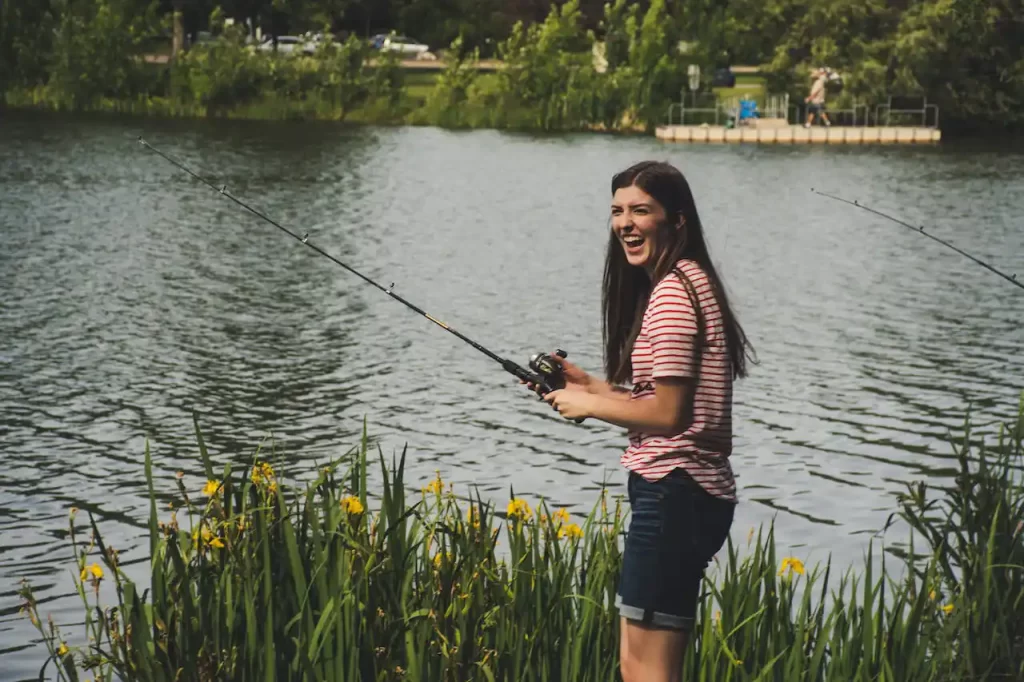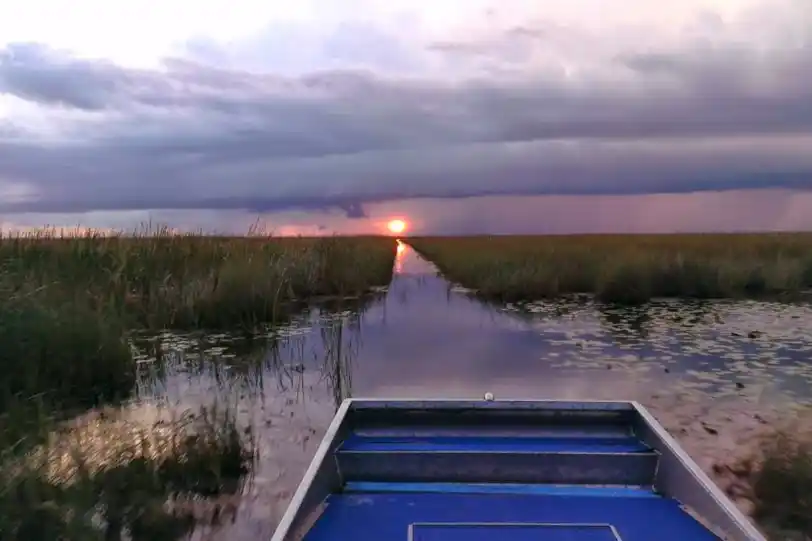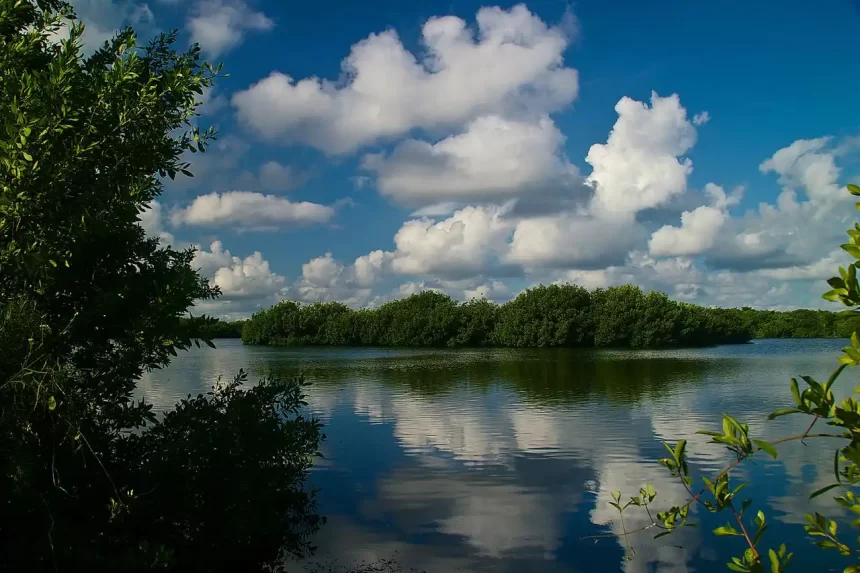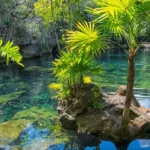Everglades National Park
Everglades National Park, a UNESCO World Heritage Site, is a natural treasure in the heart of Florida, sprawling across 1.5 million acres. Renowned for its unique and delicate ecosystem, the park is a mosaic of wetlands, mangroves, and hardwood hammocks, making it a sanctuary for a wide array of wildlife and plant species. This vast subtropical wilderness serves as a habitat for numerous rare and endangered species, such as the American crocodile, Florida panther, and West Indian manatee.
 | Private Everglades Airboat Tour including hotel pick up and Everglades specialist – $999.00 Our Everglades tour is conducted by a real guide with over 10 years of Miami experience. On the trip to the Everglades you will be provided with a lot of interesting information and you will learn insider knowledge directly from our Everglades tour guides. |
The park’s landscape is characterized by a slow-moving river flowing out of Lake Okeechobee into Florida Bay, creating the perfect conditions for its diverse habitats. The Everglades is not only a haven for nature lovers and outdoor enthusiasts, but also an important water source for southern Florida. Its diverse ecosystems support activities like bird watching, hiking, fishing, and kayaking, offering visitors a chance to immerse themselves in nature.
The Everglades also has a rich cultural history, home to the Seminole Tribe and a testament to early settler life. Whether it’s exploring the park through its scenic walking trails, embarking on thrilling airboat tours, or simply soaking in the serene beauty of its landscapes, Everglades National Park offers an unparalleled experience of connecting with the natural world.
Discovering the Wildlife of Everglades National Park

Everglades National Park is a treasure trove of diverse wildlife, where every corner presents a new discovery. From majestic American alligators basking in the sun to the elusive Florida panther, the park is a haven for wildlife enthusiasts. Keep your cameras ready as you might spot river otters playing in the water or catch a glimpse of a manatee in the quieter waters.
The park’s unique ecosystem supports an incredible variety of birds too. Whether you’re an avid birder or just enjoy the sight of these feathered beauties, you’ll be in for a treat. Watch for colorful roseate spoonbills, wood storks, and the rare snail kite. Early mornings or late afternoons are the best times for wildlife viewing, offering cooler temperatures and active animal life.
Remember, while it’s tempting to get close for the perfect picture, it’s crucial to respect the wildlife and maintain a safe distance. The park’s animals are wild and it’s important to preserve their natural behavior and habitat. Guided tours are available for those who want an expert’s insight into the park’s diverse fauna.
Exploring Everglades: A Guide to Walking Trails

The Everglades National Park offers a variety of walking trails that allow you to immerse yourself in the beauty of this unique ecosystem. The Anhinga Trail is a must-visit for any first-time visitor. This easy, accessible walkway takes you through a marsh where you can spot alligators, turtles, and an array of birds. For a more secluded experience, try the Gumbo Limbo Trail, a short but enchanting walk through a hardwood hammock.
For the more adventurous, the Long Pine Key Nature Trail offers a deeper dive into the Everglades’ wilderness. This moderately challenging trail takes you through pine rockland habitats, a critical ecosystem for many endangered species. Don’t forget to bring water, sunscreen, and insect repellent – the essentials for a comfortable hike in the Everglades.
No matter which trail you choose, each offers its unique perspective of the park. Keep an eye out for the subtle changes in the landscape and the small wonders of nature that make the Everglades so special. Remember, the trails can be quite different in wet and dry seasons, so plan your visit accordingly.
Eco-Friendly Adventures: Everglades Eco-Tours
Embarking on an eco-tour in the Everglades is not just a journey through a natural wonderland; it’s a step towards supporting sustainable tourism. These tours, led by knowledgeable guides, focus on the importance of conservation while offering an intimate look at the park’s ecosystem. You’ll learn about the delicate balance of this unique environment and the efforts to preserve it for future generations.
Choose from a variety of eco-tours, including guided kayaking trips, bird-watching tours, and nature walks. Each offers a different way to experience the Everglades, whether you’re silently gliding through mangrove tunnels in a kayak or spotting rare bird species with a pair of binoculars. These tours are perfect for families and individuals alike, offering an educational yet thrilling experience.
By joining an eco-tour, you’re not only getting an unforgettable experience but also contributing to the local economy and environmental protection efforts. It’s a win-win for both nature enthusiasts and the park. Don’t miss this chance to connect with nature and learn about the vital importance of ecosystems like the Everglades.
Capturing the Beauty: Best Photography Spots in the Everglades
The Everglades National Park is a photographer’s paradise, offering a plethora of stunning landscapes and wildlife to capture. One of the most iconic spots is the Shark Valley Observation Tower, providing a panoramic view of the park’s vast wetlands. Sunrise and sunset here are particularly magical, offering golden hues and dramatic shadows across the landscape.
For those interested in bird photography, the Eco Pond near Flamingo is a hidden gem. Early mornings here are serene, and you’re likely to spot a variety of birds in their natural habitat. The Mahogany Hammock Trail, with its ancient trees and lush foliage, offers a mystical backdrop perfect for nature photography.
When photographing wildlife, patience is key. Take your time, respect the animals’ space, and you’ll be rewarded with incredible shots. Also, remember to bring appropriate gear – a good zoom lens can make all the difference in capturing the distant wonders of the Everglades. And, of course, always be mindful of your surroundings to protect both yourself and the environment.
Kayaking Through the Everglades: Must-Try Routes

Kayaking in the Everglades offers an unparalleled opportunity to explore the park’s tranquil waterways and observe wildlife up close. The Nine Mile Pond Canoe Trail is a favorite among kayakers, winding through mangrove tunnels and open waters. This route is perfect
for both beginners and experienced kayakers, offering a peaceful escape into nature.
For a more adventurous journey, the Hell’s Bay Canoe Trail challenges kayakers with its winding paths and narrow channels. This trail is a true test of navigation skills but rewards with its secluded beauty and opportunities to spot rare wildlife. Always remember to check weather conditions and water levels before embarking on any kayaking adventure in the park.
While kayaking, keep an eye out for the incredible biodiversity around you. From fish darting under your kayak to birds flying overhead, the Everglades present a constantly changing tapestry of life. Renting a kayak or joining a guided tour are both great options to experience this unique aspect of the park. Don’t forget your waterproof camera – you’ll want to capture these moments forever!
A Birder’s Paradise: Prime Bird-Watching Locations in the Everglades
Bird-watching in the Everglades National Park is an activity that both casual observers and avid birders will find rewarding. The park is home to over 300 species of birds, many of which are rare or unique to the area. The Anhinga Trail is a hotspot for birding, offering close-up views of water birds like anhingas, herons, and egrets in their natural habitat.
Another excellent location for birding is the Pa-hay-okee Overlook. This elevated platform provides a sweeping view of the sawgrass prairie, a prime spot for spotting raptors and wading birds. For a more secluded bird-watching experience, the Snake Bight Trail near Flamingo leads to a remote bay with a high concentration of shorebirds, especially during the migration season.
When bird-watching, it’s essential to be quiet and patient. Bring a pair of binoculars and a field guide to enhance your experience. Early mornings or late afternoons are the best times for birding, as birds are most active during these cooler parts of the day. Whether you’re a seasoned birder or just looking to enjoy nature’s chorus, the Everglades’ birding spots won’t disappoint.
Fishing in the Everglades: Top Spots and Tips

Fishing in the Everglades National Park is a dream come true for anglers of all skill levels. The park’s vast network of freshwater and saltwater bodies offers a rich fishing ground for species like snook, tarpon, and bass. One of the best spots for freshwater fishing is the Tamiami Trail, where you can cast a line for largemouth bass and bluegill.
For those interested in saltwater fishing, Flamingo offers access to Florida Bay, a haven for redfish, spotted sea trout, and even sharks. Remember, fishing in the Everglades requires a Florida fishing license, and it’s important to be aware of the park’s fishing regulations to protect its delicate ecosystem.
When planning your fishing trip, consider hiring a local guide who can provide valuable insights into the best spots and techniques. They can also help navigate the park’s complex waterways safely. Always practice catch-and-release fishing to preserve the park’s fish populations, ensuring that future generations can enjoy this remarkable experience too.
Your Ultimate Guide to Visiting Everglades National Park
Visiting Everglades National Park is an adventure that promises natural beauty and unique experiences. The park is open year-round, but the best time to visit is during the dry season from November to March, when wildlife is more visible and mosquito activity is minimal. The park entrance fee is valid for seven consecutive days, giving you plenty of time to explore its vast expanse.
There are three main entrances to the park: the Homestead Entrance, the Miami Entrance, and the Everglades City Entrance. Each leads to different parts of the park, offering unique landscapes and activities. The Ernest Coe Visitor Center near Homestead is a great starting point, providing maps, exhibits, and information about guided tours.
When planning your visit, remember to bring essential items like water, sun protection, insect repellent, and comfortable walking shoes. Cell phone coverage can be spotty in the park, so it’s wise to download maps and guides beforehand. Whether you’re here for hiking, wildlife viewing, or simply to bask in the natural beauty, Everglades National Park is sure to leave a lasting impression.
Camping in the Wild: Best Everglades Campsites

Camping in the Everglades National Park offers a unique way to connect with nature and experience the park’s nocturnal life. There are two drive-in campgrounds, Long Pine Key and Flamingo, both providing different camping experiences. Long Pine Key is nestled among pine trees, offering a serene and shaded environment, while Flamingo is located near the Florida Bay, providing stunning water views.
For the more adventurous, backcountry camping is available on chickees (wooden platforms over water), ground sites, and beach sites. These remote sites provide an unparalleled wilderness experience but require a backcountry permit and good preparation. Backcountry camping is a true adventure, allowing you to immerse yourself in the untouched beauty of the Everglades. Remember to pack all necessary supplies, including water, as there are no facilities in these areas. Be prepared for the unique challenges of camping in a wild environment, such as changing weather conditions and the presence of wildlife.
Whether you choose a campground or the backcountry, camping in the Everglades is an unforgettable experience. Nights under the starry sky, surrounded by the sounds of nature, offer a peaceful escape from the hustle of daily life. Always follow the park’s guidelines to ensure your safety and the protection of the delicate ecosystem around you.
Booking in advance is recommended, especially during the peak season. And while you’re camping, remember to leave no trace, keeping the park pristine for wildlife and future visitors. Whether you’re a seasoned camper or trying it for the first time, the Everglades provides a backdrop for memories that will last a lifetime.
Thrilling Airboat Tours in the Everglades

Airboat tours in the Everglades National Park offer a thrilling and unique way to explore this vast wilderness. Skimming across the shallow waters at high speeds, these tours take you through areas inaccessible by foot or conventional boats. You’ll have the opportunity to see a variety of wildlife, including alligators, turtles, and numerous bird species, all from the unique vantage point of the airboat.
Several local operators offer airboat tours, each providing different experiences and lengths of tours. Some include stops at remote islands or educational talks about the ecosystem and wildlife of the Everglades. When choosing a tour, look for operators who prioritize environmental sustainability and respect for wildlife.
Remember to bring ear protection, as airboats can be quite loud. Also, sunscreen and hats are a must in the open sun. While airboat tours provide an exhilarating experience, they are also an opportunity to learn about the importance of this ecosystem and the efforts to preserve it. It’s an adventure that combines excitement with education, perfect for families and individuals alike.
Championing Nature: Conservation Initiatives in the Everglades
The Everglades National Park is not just a place of natural beauty, but also a site of significant conservation efforts. The park is home to numerous endangered and threatened species, and its preservation is crucial for their survival. Visitors can learn about these conservation initiatives through various educational programs and visitor center exhibits.
One of the key efforts is the restoration of the natural water flow, which is vital for maintaining the park’s diverse habitats. Programs like the Comprehensive Everglades Restoration Plan aim to correct the environmental changes caused by human intervention. Visitors can support these efforts by participating in guided tours that focus on conservation and by following park guidelines that protect the ecosystem.
The park also works closely with scientists and researchers to monitor wildlife and habitats, ensuring the health of the ecosystem. As a visitor, you can contribute to these efforts by respecting wildlife, staying on designated trails, and not disturbing the natural environment. Your visit to the Everglades can be a part of the larger effort to preserve this unique and vital ecosystem for future generations.
Stepping Back in Time: Historical Landmarks of the Everglades
The Everglades National Park is not only rich in natural beauty but also in history. The park is home to several historical sites that tell the story of the area’s past. The Nike Hercules Missile Base, also known as HM-69, is a relic of the Cold War era and offers guided tours that delve into this fascinating period.
Another significant site is the Smallwood Store in Chokoloskee, an old trading post that offers a glimpse into the life of early settlers in the Everglades. The store is now a museum, showcasing artifacts and stories from the area’s pioneer days. Visiting these sites offers a unique perspective on the human history intertwined with the natural landscape of the Everglades.
Exploring these historical landmarks provides a deeper understanding and appreciation of the area. It’s a reminder of the many layers of history that have shaped the Everglades, from indigenous cultures to modern conservation efforts. Each site tells a part of the story, adding to the rich tapestry that makes the Everglades National Park a truly unique destination.
Flora and Fauna of the Everglades: A Diverse Ecosystem
The Everglades National Park is a biodiverse sanctuary, home to a vast array of plant and animal species. The park’s unique landscape, ranging from wet sawgrass prairies to dense mangrove forests, supports a variety of life forms. Among the most iconic plants is the sawgrass, which covers much of the Everglades and provides habitat for numerous wildlife species.
The park is also a crucial habitat for many endangered species like the American crocodile and the West Indian manatee. The diversity of bird species, from the strikingly beautiful Roseate Spoonbill to the elusive Wood Stork, makes the park a birdwatcher’s paradise
. The Everglades’ complex ecosystem is a delicate balance, each species playing its role in maintaining the health of the environment.
Visitors can explore the rich flora and fauna through the park’s network of trails and waterways. Whether it’s spotting a rare orchid or watching an alligator in its natural habitat, the Everglades offers a unique opportunity to witness the interplay of life in one of the world’s most unique ecosystems. It’s a living, breathing testament to the beauty and complexity of nature.











